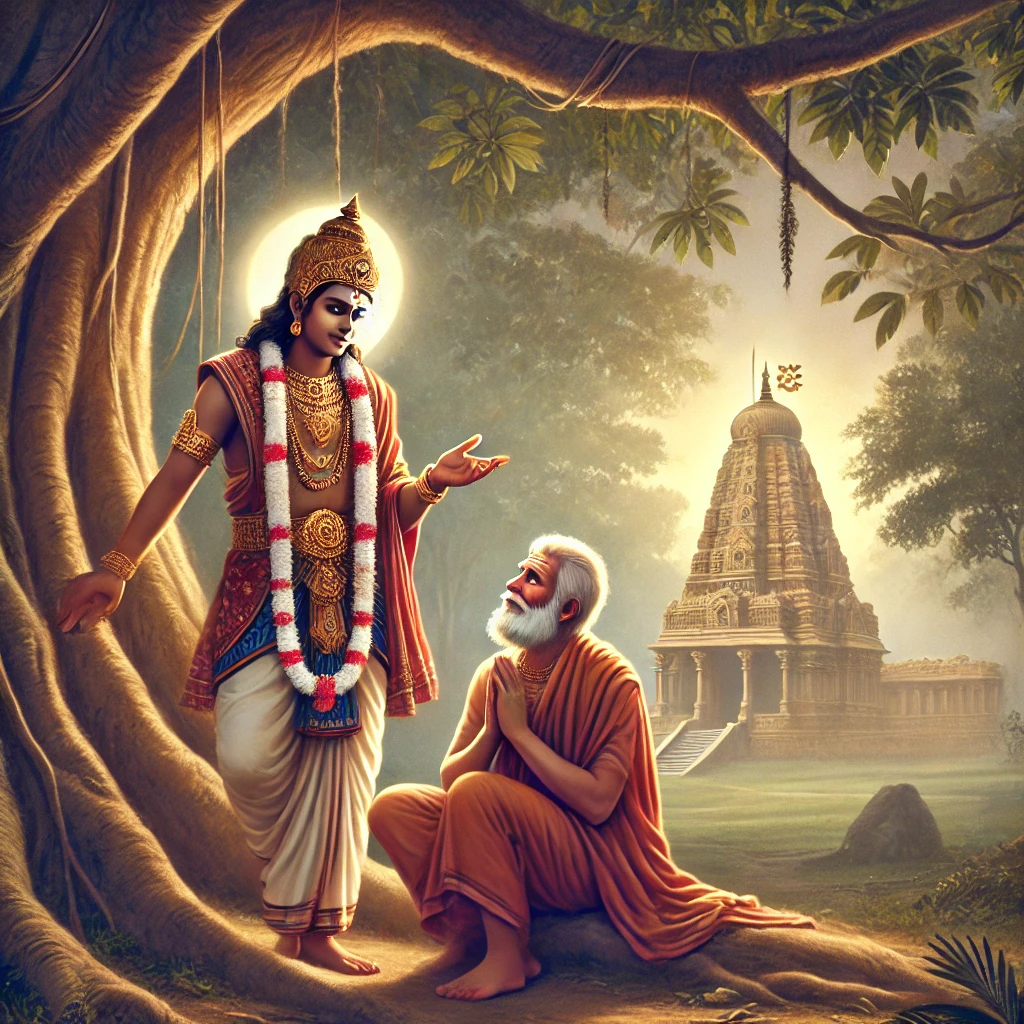Rama Ekadashi, observed on the Ekadashi (11th lunar day) during the Krishna Paksha (waning phase of the moon) in the Hindu month of Kartik, is revered for its profound significance in the Vaishnava tradition. According to sacred texts like the Padma Purana and Skanda Purana, this day is celebrated as a time to purify the mind, seek forgiveness, and strengthen one’s connection with the Supreme.
What is Rama Ekadashi?
Rama Ekadashi, often falling in October or November, is regarded as one of the most potent of the 24 Ekadashis observed each year. Devotees fast and engage in devotional practices, dedicating the day to Lord Vishnu, known as the protector and sustainer of the universe. Rama Ekadashi is named after Goddess Lakshmi (also known as Rama), the consort of Lord Vishnu, symbolizing abundance, grace, and divine blessings.
The Story of King Muchukunda and the Power of Rama Ekadashi
King Muchukunda was a renowned ruler known for his devotion, wisdom, and justice. His kingdom prospered under his rule, as he was deeply committed to upholding dharma (righteousness) and serving the needs of his subjects. As a devout follower of Lord Vishnu, he led a life steeped in spiritual values and encouraged his people to observe practices that honored the Divine.

One day, a troubled Brahmin approached the king, his face etched with sorrow and despair. The Brahmin confessed that he had led a life clouded by mistakes and misdeeds, which had left him burdened with karmic debt and unable to find peace. In desperation, he sought King Muchukunda’s guidance on how to cleanse himself of his sins and start a new chapter devoted to goodness and purity.
Moved by the Brahmin’s sincere plea for help, King Muchukunda advised him to observe Rama Ekadashi, explaining that fasting and dedicating oneself to Lord Vishnu on this auspicious day held the power to wash away even the gravest of sins. The king shared with the Brahmin that Lord Vishnu’s grace on Ekadashi was such that any devotee who observed the fast with a pure heart could experience profound transformation and spiritual liberation.
Encouraged, the Brahmin followed the king’s advice with full dedication. He observed Rama Ekadashi by fasting, engaging in prayer, and chanting the holy names of Lord Vishnu. With each prayer and act of devotion, he felt the burdens of his past lifting, replaced by a newfound sense of peace and purity. By the end of the Ekadashi observance, he experienced a profound spiritual awakening and was freed from the weight of his former misdeeds.
Witnessing the Brahmin’s redemption reinforced King Muchukunda’s belief in the power of Rama Ekadashi. The story of this transformative experience soon spread across the kingdom, inspiring others to embrace Ekadashi observances with renewed faith. People came to understand that no matter the darkness of one’s past, sincere devotion and adherence to the teachings of Lord Vishnu could offer a path to redemption.
This story highlights how Rama Ekadashi embodies mercy, forgiveness, and divine grace, providing a way for all devotees, regardless of their past actions, to reconnect with their spiritual essence and seek forgiveness through devotion. It also reflects the importance of compassion and guidance, as shown by King Muchukunda’s role in helping the Brahmin on his journey toward spiritual cleansing.
Rituals and Practices of Rama Ekadashi
On Rama Ekadashi, devotees engage in various activities that deepen their connection with the Divine, such as:
- Fasting: Fasting is central to the observance. Some devotees choose to abstain from food and water entirely, while others may opt for a fruit-based diet. Fasting on Ekadashi is considered essential in helping one control the senses and purify the body and mind.
- Chanting and Meditation: Chanting the holy names of Lord Vishnu, especially the Hare Krishna mantra, is highly encouraged. This mantra meditation, often guided by ISKCON’s teachings, allows one to focus the mind and experience peace and divine joy.
- Reading Scriptures: Reading or listening to sacred texts, such as the Bhagavad Gita, Srimad Bhagavatam, and Vishnu Purana, is an integral part of the observance. These texts serve as a beacon of knowledge and offer guidance on the path of righteousness.
- Offering Prayers to Lord Vishnu: Temples worldwide, especially ISKCON temples, organize special ceremonies on this day, with devotees offering prayers, flowers, and incense to Lord Vishnu, expressing their gratitude and devotion.
The Spiritual Significance of Rama Ekadashi
The purpose of fasting on Rama Ekadashi, as with all Ekadashis, is to focus the mind on the Divine and avoid indulgence in material activities. It’s said in the Padma Purana that observing Rama Ekadashi with faith and sincerity grants liberation from the cycle of birth and death, leading the soul closer to moksha (spiritual liberation).
By aligning one’s thoughts and actions on Rama Ekadashi with the divine teachings of Lord Vishnu, devotees experience spiritual cleansing and a renewed sense of purpose. The day serves as a powerful reminder of the importance of devotion, detachment from material desires, and surrender to the Divine.
Embracing the Spirit of Rama Ekadashi
Rama Ekadashi is a day that emphasizes spiritual growth and self-reflection. For those on a path of devotion, it provides an opportunity to let go of worldly distractions and immerse themselves in the love and teachings of Lord Vishnu. Whether one seeks forgiveness, prosperity, or spiritual enlightenment, Rama Ekadashi holds the promise of divine grace for all sincere seekers.
By observing Rama Ekadashi with a pure heart, one not only fulfills a spiritual duty but also opens up a pathway to inner peace and eternal happiness. This sacred observance allows devotees to honor Lord Vishnu and receive the boundless blessings of Goddess Lakshmi, setting the stage for a more fulfilled and spiritually enriched life.